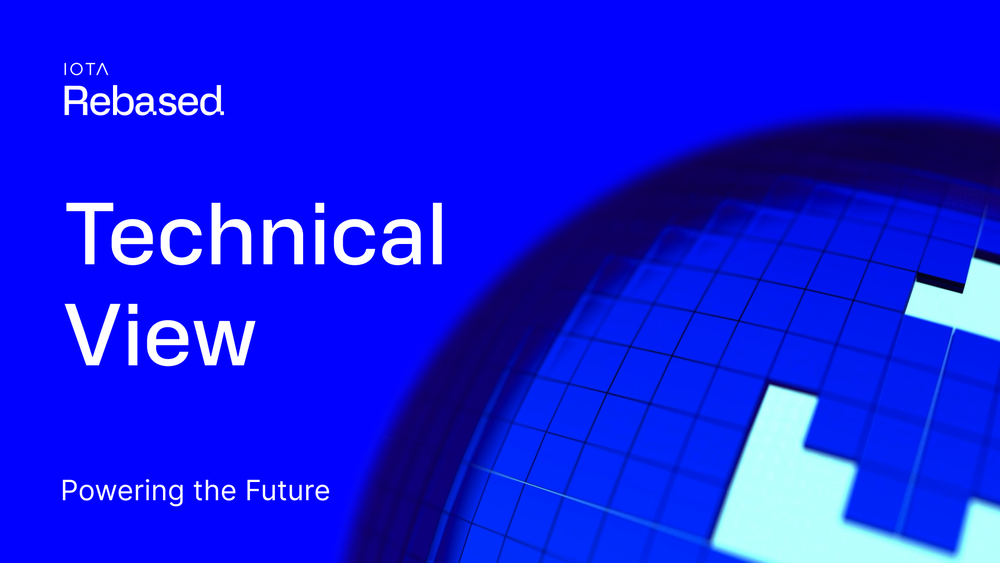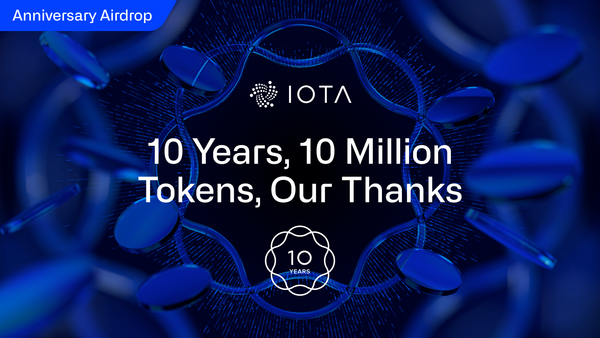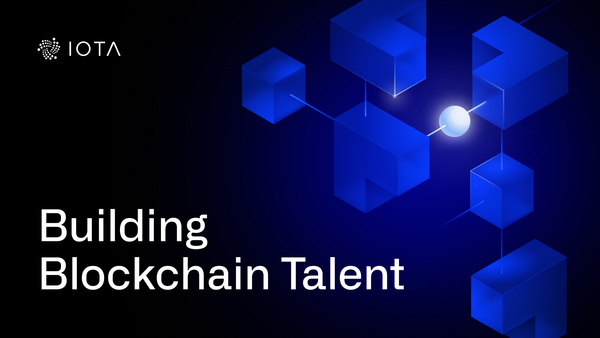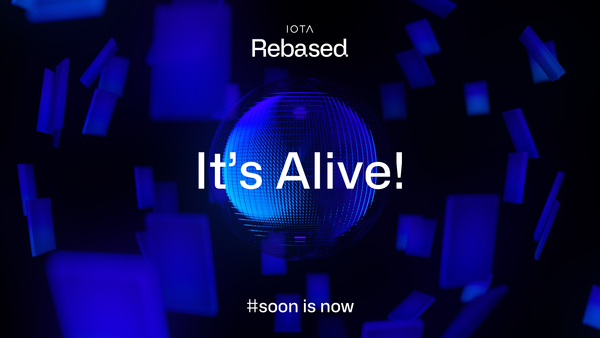IOTA Rebased: Technical View
Powering the Future with Advanced Smart Contracts and Frictionless Transactions
TL;DR:
The IOTA Foundation is proposing a major transformation with IOTA Rebased, shifting away from its plans for IOTA 2.0 to leverage established DLT technology. This rebase would adopt the Move VM, transitioning from a UTXO to an object-based ledger model for enhanced programmability. A new tokenomics model would introduce staking rewards, low fees, and sponsored transactions, alongside a fully decentralized Delegated Proof-of-Stake system. A public testnet has been launched for IOTA Rebased alongside new software tools, including a browser wallet extension, explorer, SDKs, and an updated documentation portal.
Today, we’re excited to share a potentially transformative shift in the IOTA technology and roadmap, pending a governance vote. If the proposal is accepted, it would fast-track L1 smart contracts and decentralization to let IOTA become a fully-fledged DLT.
This blog post dives deeper into the technical details of the proposed IOTA Rebased protocol, including its tokenomics model, showing the exciting possibilities this shift would open up for the broader IOTA ecosystem and elaborating on the protocol refinements we have been researching to improve from the upgrade onwards.
Powering IOTA with MoveVM: From UTXO to Object-Based Architecture
The IOTA Rebased proposal suggests a significant architectural shift, moving away from the UTXO model to embrace an Object Model powered by the Move Virtual Machine. This change would enhance the network's flexibility and programmability, opening doors for complex applications written via smart contracts. This transition could pave the way for sophisticated financial instruments, decentralized exchanges, intricate supply chain systems, and a myriad of other applications that demand the level of programmability that the UTXO model found in previous IOTA protocol versions struggles to provide.
Key features of our MoveVM implementation include:
- Resource-oriented programming, allowing for secure and flexible management of digital assets.
- Strong data abstraction capabilities, simplifying complex tasks related to resource management.
- Static verification, enabling the detection of errors or vulnerabilities before code execution and at compile time, significantly enhancing security.
- Support for formal verification, allowing for rigorous validation of contract logic.
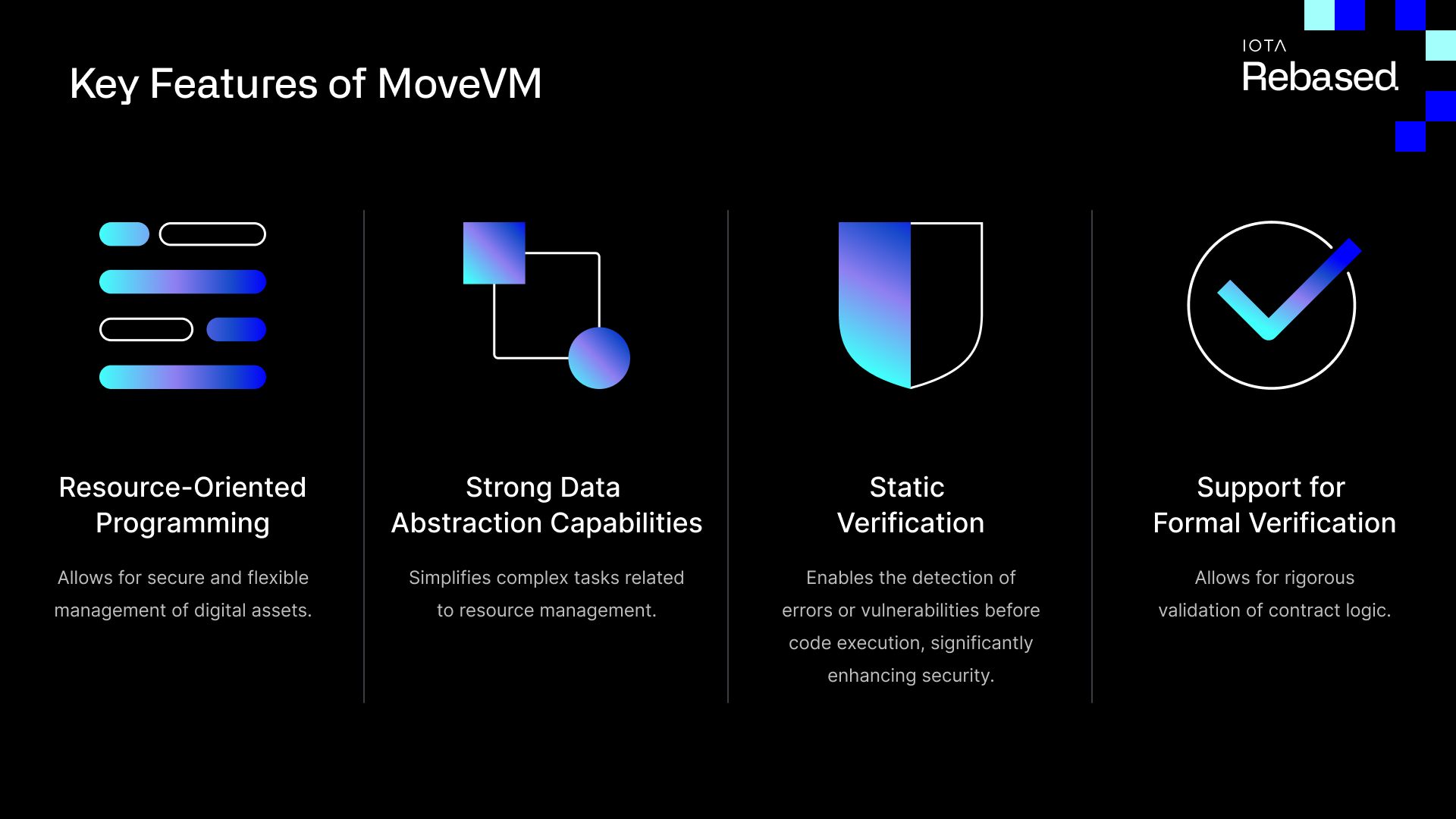
From Feeless to Frictionless: A New Economic Frontier
Our IOTA Rebased proposal introduces a new tokenomics model designed to incentivize network participation, ensure long-term sustainability, and support a secure decentralized network.
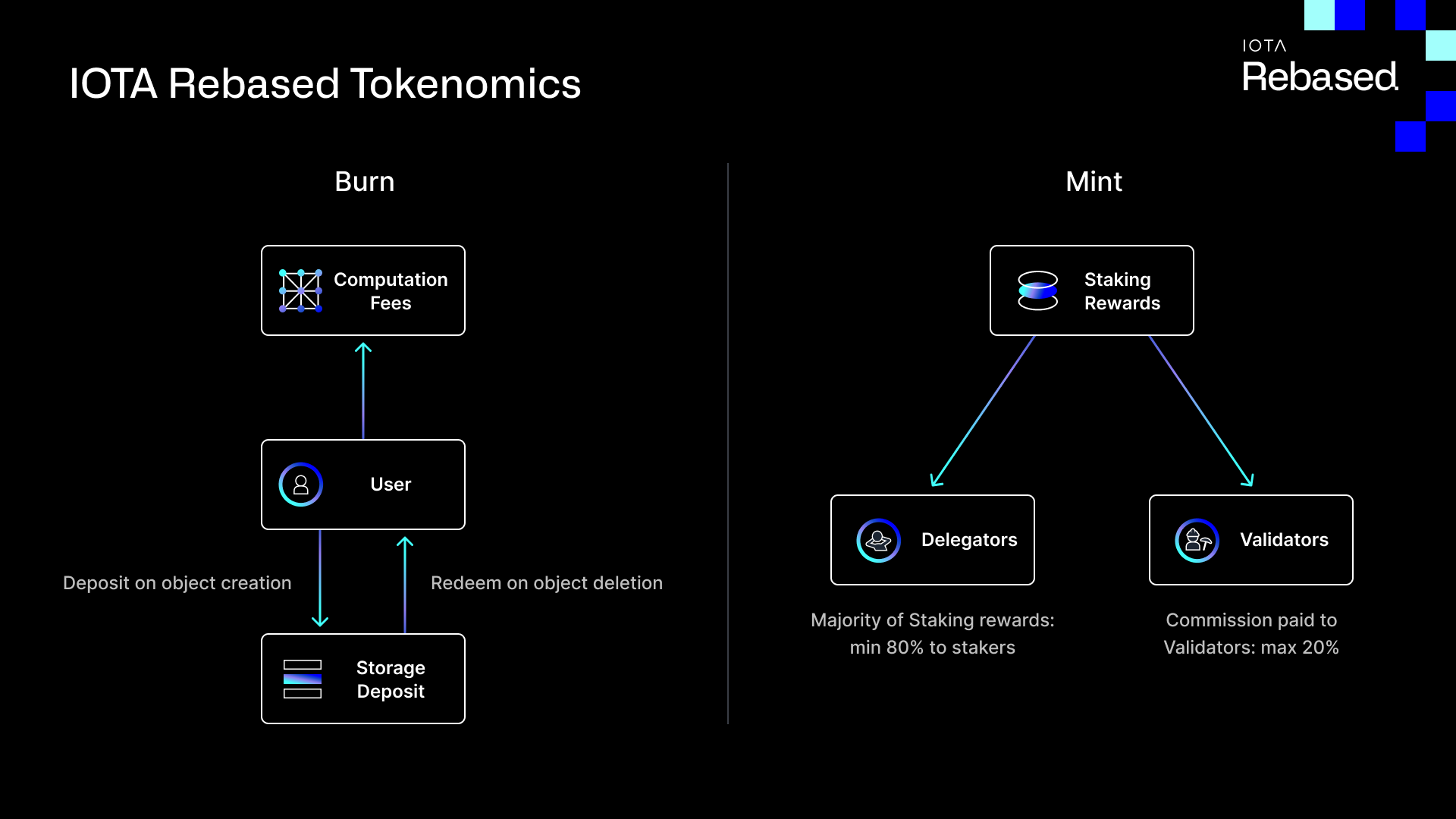
In short, the tokenomics model of IOTA would change in the following ways:
- To secure the network, validators and their delegators would be compensated via newly minted tokens. Per epoch, 767k new IOTAs would be minted and distributed to validators/delegators in the form of staking rewards. This would mean that the supply would grow ~6% in the first year and then gradually decline as the rate of 767k stays constant. Staking rewards would be distributed to validators/delegators proportionally to the overall stake while taking into account the commission set by the respective validator.
- Transactions incur a small fee which would be burned to set deflationary pressure on the supply. This means that network utilization directly impacts the inflationary/deflationary nature of the dynamic supply. The initial gas price would be set to 1000 Nanos per computation unit (1 Nano = 0.000000001 IOTA) which translates to around 0.005 IOTAs for an average-sized transaction. In the beginning, the base gas price will be fixed and set as a protocol parameter but we would extend this system by creating more sophisticated gas price discovery on the protocol level in a later upgrade to make it properly dynamic and fairer.
- Another small deposit would be used to pay for storage which is redeemable upon freeing the taken space similar to the storage deposit system used in IOTA Stardust.
- The minimum staking requirement to become a validator would be set to 2M IOTAs and there would be initially a maximum of 150 validator seats. Note that validators wouldn’t have to come up with the minimum staking requirement by themselves but could leverage the stake assigned by delegators to overcome the minimum requirement. We currently foresee the hardware requirements for a validator node to be: 128GB of RAM, 24-core CPU, 4TB of storage, and a 1Gbps uplink.
Tokens from the Stardust upgrade in 2023 will still be unlocked gradually and currently locked tokens can be used to be delegated to validators to secure the network and yield staking rewards.
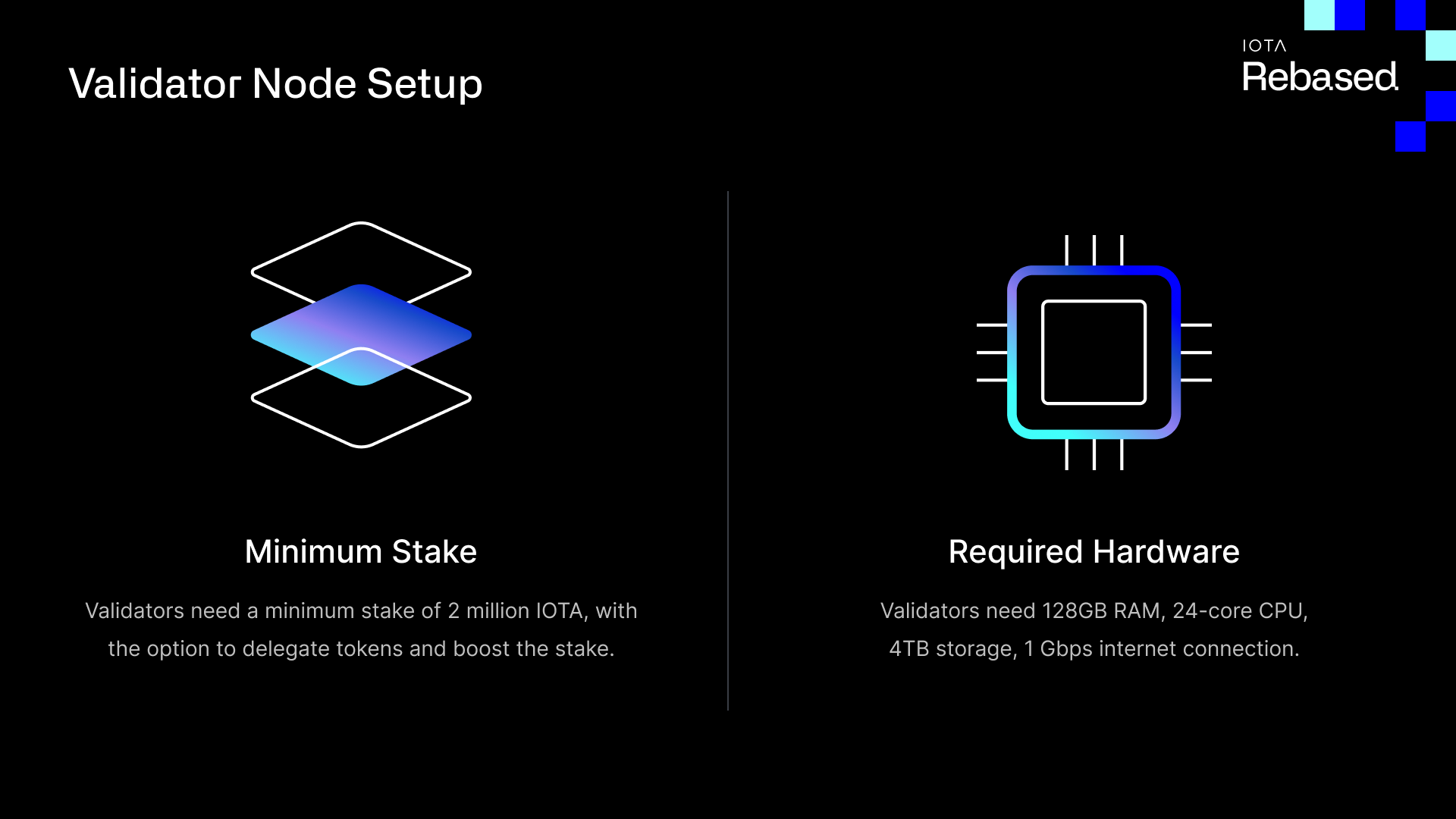
While introducing transaction fees would be a departure from our existing feeless protocol, it would significantly enhance the experience for developers, token holders, and validators by removing the mental overhead of a dual-token system as suggested in IOTA 2.0. Crucially, we believe that if the proposal were accepted, the monetary benefits for token holders via staking rewards would outweigh the costs of fees: The staking rewards earned from securing the network through delegation or staking would likely exceed the amount spent on transaction fees, resulting in a net gain for token holders. In other words, despite paying fees, participants would ultimately end up with more tokens than they started with as the transaction fees are so low compared to the staking rewards earned. Additionally, we would introduce the concept of sponsored transactions: this feature would allow application developers to create services that don't require their users to own or buy IOTA tokens by covering the transaction fees on their behalf.
Note that all the parameters mentioned above are values that could be changed in the future through governance processes if the demand for change is given.
Future Perspective: Our New Technological Roadmap
IOTA Rebased uses a protocol based on Sui as its base with the above-mentioned adjustments to the tokenomics model. When choosing the base protocol to use for the proposal we looked into preserving some design principles of IOTA 2.0, such as parallel execution, using a DAG as the mempool, and having a Proof-of-Stake system. However, we still want to innovate further. Indeed, we have already been researching enhancements over the past few months that will be shipped iteratively on top of IOTA Rebased once they are ready (assuming the proposal is accepted):
- Resilient Consensus: We’ve developed mechanisms that improve upon the Mysticeti consensus, reducing latency degradation during Byzantine behavior. While Sui’s implementation is sound, we believe it does not put enough emphasis on robustness when the network is running in less-than-ideal conditions. As we foresee IOTA Rebased to be a truly decentralized network with a diverse array of validators, any consensus algorithms put in place must stay performant to not diminish system performance.
- Fairer Gas Prices: Sui uses temporary subsidies from the allocated token supply as the main compensation mechanism for validators. In IOTA Rebased, we already shifted to a tokenomics model where those subsidies are not only temporary, thus making the validator's business model not completely dependent on the fee market, even in the long run. This allows us to keep fees low while retaining a secure and incentivized system. To further improve the fee market for the users, we anticipate a future change in the base fee calculation. In Sui, validators use an intra-validator survey to define the base gas price, which we believe might give too much power to validators, potentially creating less room for fairer fees. In the future, instead of allowing validators to set the base gas price, protocol-level algorithms would manage pricing by factoring in network congestion and the popularity of shared objects. This ensures a fairer system for all, with the protocol making balanced decisions on how fees are distributed – whether through burning fees to increase scarcity, funding a decentralized treasury, or redistributing rewards to ecosystem contributors. The protocol would still allow for tipping validators for prioritization, ensuring transactions can be processed fairly when demand spikes faster than the protocol can adjust gas prices.
- Committee Selection: We’re adjusting the committee selection algorithm to consider new validator candidates with higher stakes than current active validators to join the active set. In Sui, once all validator slots are filled, no replacements of validators occur, regardless of how much more stake a new candidate may offer. IOTA Rebased would ensure that the network remains dynamic by allowing more competitive validators to participate, promoting fairness, and maximizing network security.
- Transitioning to a MultiVM ledger: While the MoveVM would be our main execution environment, we foresee a future where multiple VMs will be executed directly within L1 to provide the same degree of security to all applications no matter in what language they are written. As this is a bigger undertaking, note that we are currently only in the early research stages of it.
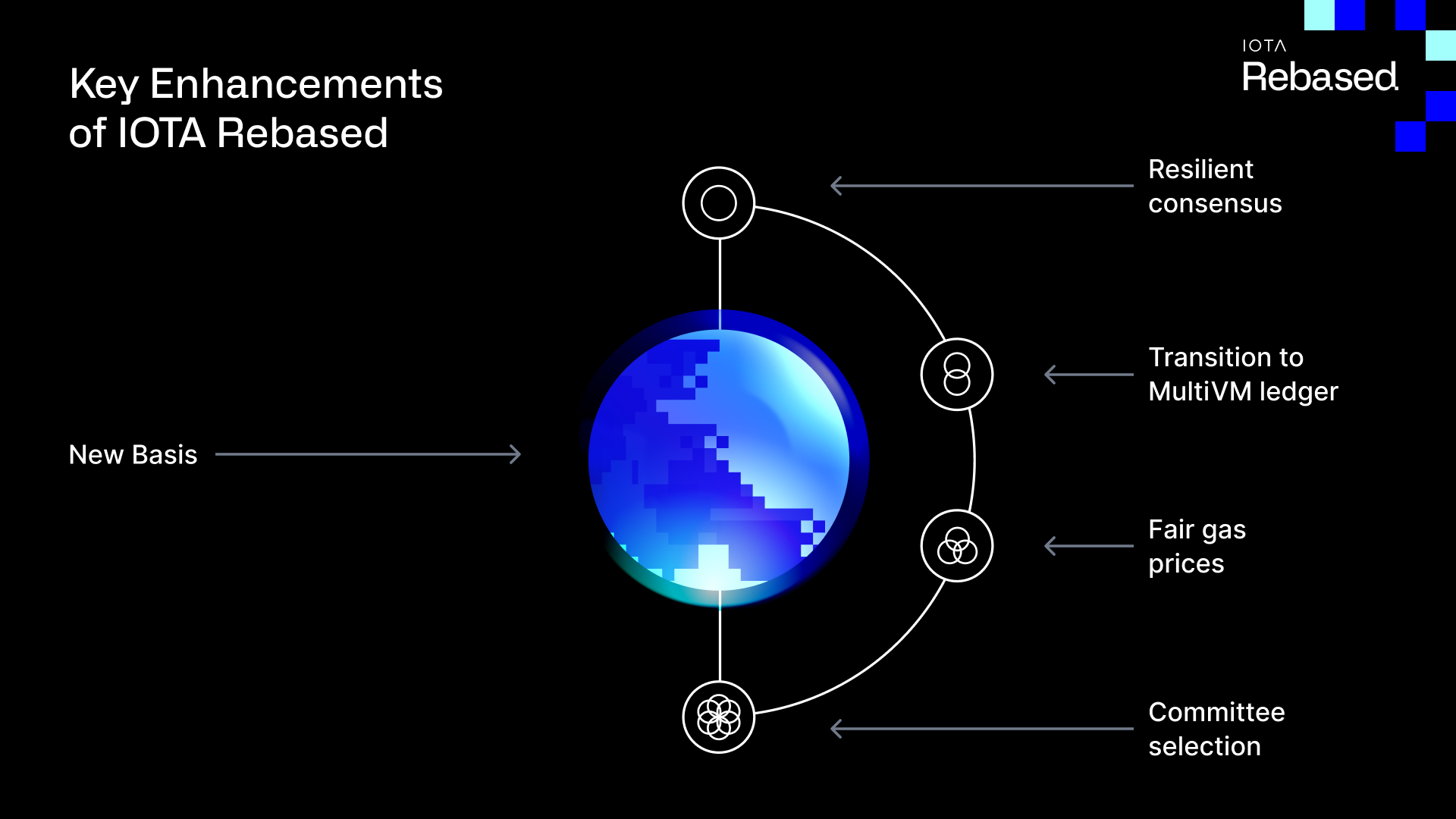
Built on top of IOTA Rebased, these protocol refinements will further specialize our implementation, enhancing its unique characteristics.
Looking Beyond: A Multi-Environment Future
As mentioned above, our journey doesn't just stop with MoveVM. We're setting our sights on incorporating multiple execution environments directly into our Layer 1 protocol. This strategy includes a groundbreaking goal: bringing the EVM onto Layer 1.
Why is this significant? By integrating the EVM at the core protocol level, we'd ensure it benefits from the same robust security and high degree of decentralization as the rest of the network. This is our commitment to ensuring that existing dApps deployed on IOTA EVM (currently an L2 network on IOTA) stay relevant in the long run and become more tightly integrated with the entirety of our ecosystem. This move would not only enhance the versatility of the IOTA ecosystem but also provide developers and users with an unparalleled range of options without compromising security. Additionally, moving EVM with all its transactions and smart contract operations and activity to the L1 would increase the network usage and, therefore, the amount of burned IOTA tokens as fees, which would further contribute to the deflationary part of our tokenomics.
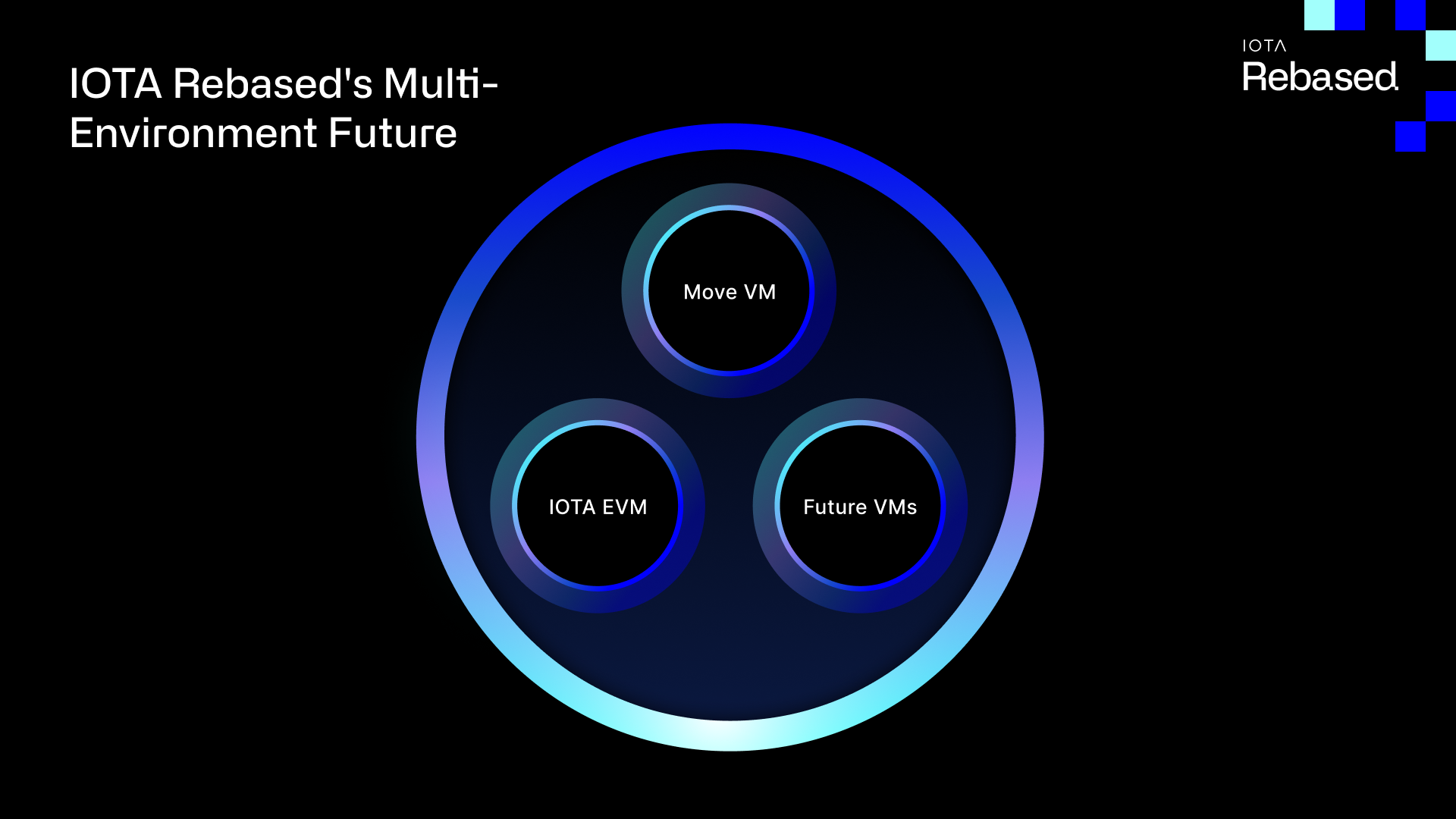
Note that if the proposal is accepted, we will run the IOTA EVM L2 alongside the IOTA Rebased L1, with plans to later integrate it into L1 once the multiVM work has become more advanced.
Collaborate, Innovate, Launch: IOTA Rebased's Path to Mainnet
We’ve already launched the IOTA Rebased public testnet, offering a comprehensive testing ground for our proposed new protocol, MoveVM integration, consensus, and tokenomics models, and validator system in a real-world environment.
To support testnet participants, we've established dedicated channels for reporting issues on our Discord. Our team will provide regular updates and improvements based on community feedback and internal testing results there.
Comprehensive documentation, including guides on setting up nodes, interacting with smart contracts, and participating as a validator, is available to help users navigate the proposed new features effectively in the new documentation portal.
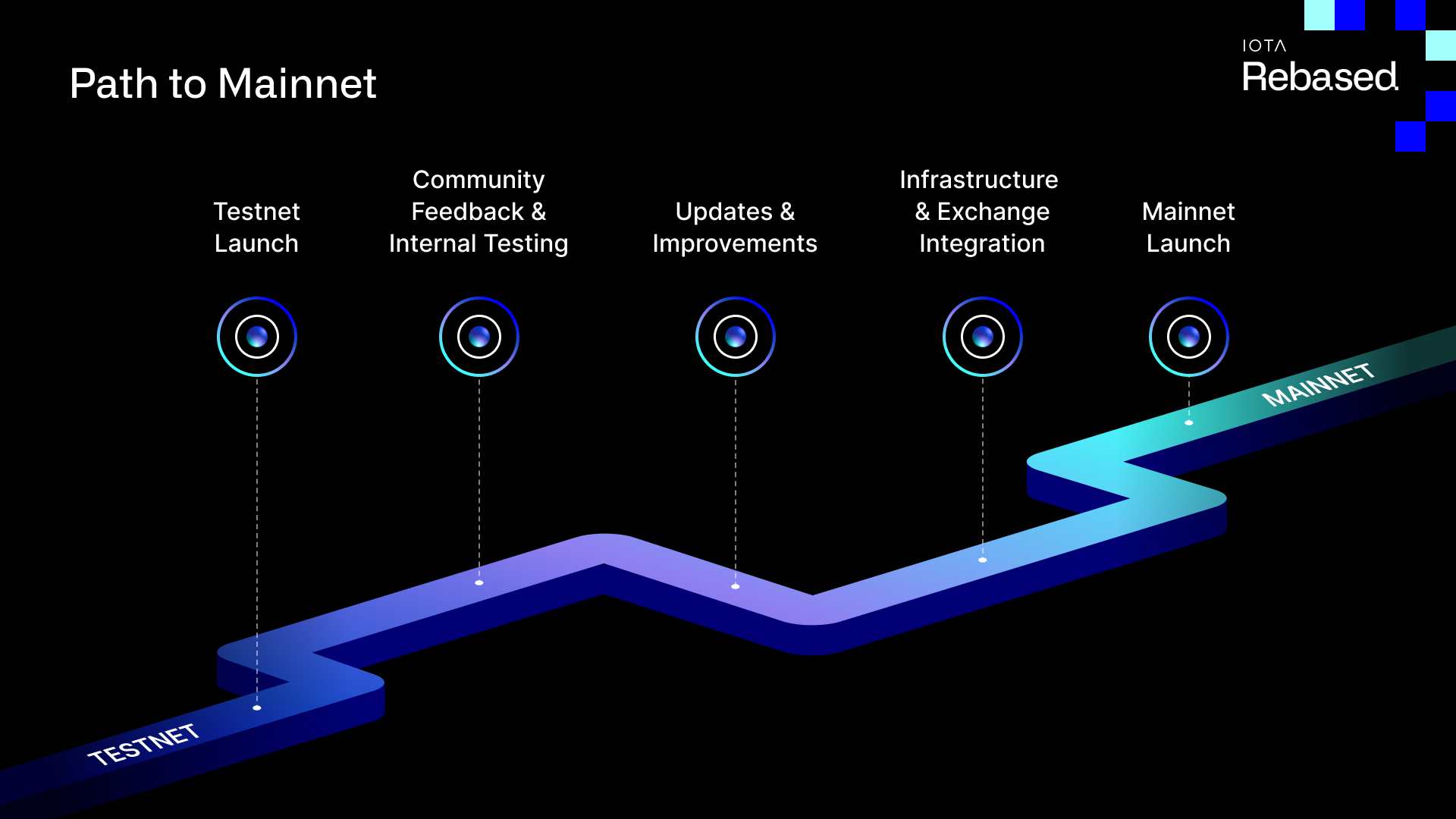
Looking ahead, we’re committed to ensuring the highest standards of quality and security throughout the development process. We’ve set a potential target for the mainnet launch in early 2025, allowing ample time for testing, refinement, and audits.
Tooling Up: A New Product Arsenal
The following software products are currently in various stages of development and testing. They will undergo thorough audits and refinement based on testnet feedback before the Mainnet launch.
IOTA Wallet Browser Extension and Dashboard dApp: The new IOTA Wallet browser extension will offer a user-friendly interface for managing IOTA tokens, supporting all the usual expected functionalities such as staking/delegating tokens and managing assets. The IOTA Wallet will replace Firefly, and token holders will be able to simply import their secrets/mnemonics into it to manage the same accounts they had before.
As an auxiliary product, we are also building the IOTA Wallet Dashboard dApp (web app), which connects to the browser extension to manage additional functionalities such as vested tokens or converting assets migrated from IOTA Mainnet running on Stardust protocol. We plan to open up beta testing of the dashboard dApp once its development has further progressed.
To provide more security overall, we have also been working on a new Ledger app that will connect to the browser extension wallet to outsource signing to a hardware device, which will be available shortly after this announcement.
Stardust Asset Management: As part of our ongoing work we have invested tremendous resources into easing the potential transitioning period for developers who have previously managed assets on our IOTA Mainnet which currently runs the Stardust protocol.
We, therefore, developed specific Move packages for IOTA Rebased that allow developers to easily manage and migrate assets stemming from a previous Stardust protocol-based network. To be more clear, if the proposal is accepted we will be converting the entire IOTA Mainnet ledger one-to-one on IOTA Rebased Mainnet since assets must be available in their same form on the new network. You can check out the documentation regarding the Stardust Move packages in the documentation portal.
SDKs & CLI: We're providing updated SDKs for Rust and TypeScript developers, as well as comprehensive documentation, tutorials, and examples. We are also offering a new CLI for interacting with smart contracts and validator tools for setting up and managing validator nodes. To support smart contract development, we're offering IDE plugins for Move language development, along with testing, deployment, and security analysis tools.
Identity SDK: IOTA Identity has been upgraded to the new Move base layer while keeping the API as backward-compatible as possible. Existing Identities on the Stardust ledger are migrated to the aforementioned Stardust Move packages and can be migrated to the new Move-based Identities using our libraries.
The programmability of the base layer allows us to significantly extend the capabilities of the identity solution. In the first iteration, we are introducing advanced access control and change management for multiple controllers. We intend to add more features and advancements in the coming months.
IOTA Rebased Explorer: The explorer has been completely redesigned to provide detailed insights for IOTA Rebased in terms of network activity, real-time tracking of transactions, blocks, and validator metrics. It also gives an overview of what’s going on in the network.
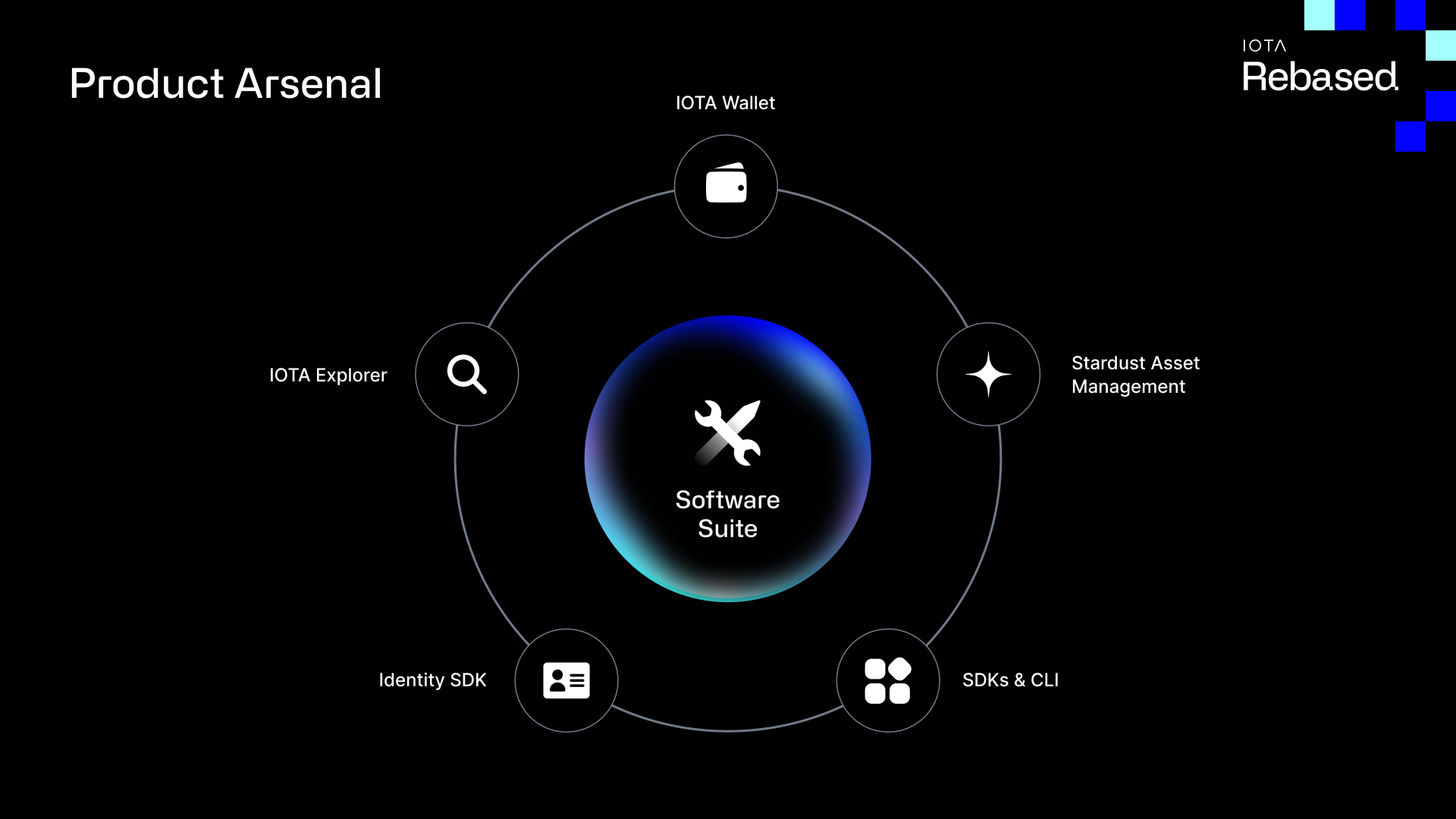
As we propose this new chapter with IOTA Rebased, we're excited about the possibilities it opens up for our ecosystem. We invite our community to join us in this journey by testing, providing feedback, and helping us shape the future of IOTA.
Read More
IOTA Rebased: Public Testnet and DevNet Guide

